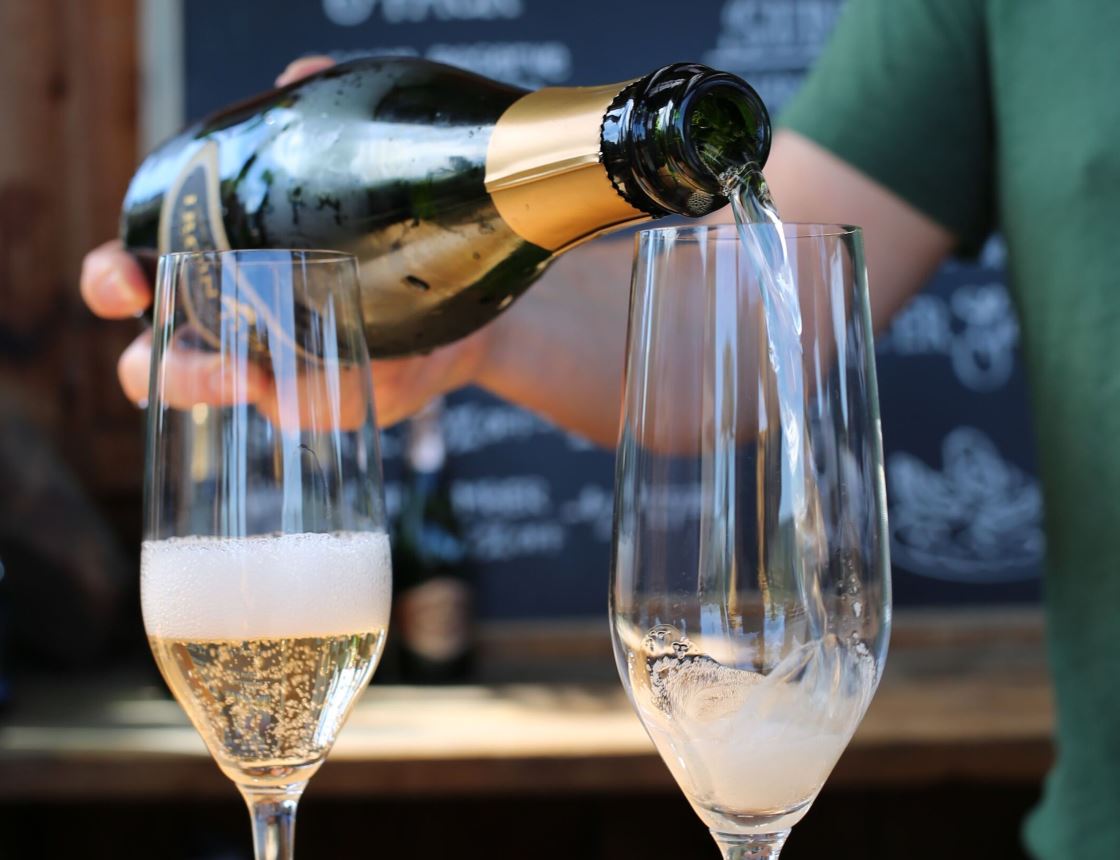


It pops up all the time. People say: “We love Iron Horse Champagne.” It’s a compliment. The operative words are love and Iron Horse, i.e., delicious bubbles. But then some people awkwardly correct themselves and mutter: “I mean, Sparkling Wine”. The distinction is accurate. Champagne is a geographic area. We would never call our wine Champagne, any more than we would call our Pinot Noir, Burgundy. But nor would I ever contradict anyone who does. But, it begs the question, what is the difference between Champagne and Sparkling Wine?
Tomayto tomahto, potayto potahto. Champagne has become generalized to mean all Sparkling Wine. The name has become so widely used that it is practically a generic term, synonymous with the general product category.
In fact, Champagne is a Sparkling Wine that originates from the Champagne region of France. Just as Iron Horse is a Sparkling Wine that originates from Sonoma County, Russian River, Green Valley and most specifically our home place.
Besides being a place name, Champagne is a powerful brand with significant marketing Euros behind it. Efforts to protect the appellation go back to the Treaty of Versailles, ending World War I. A loophole exists that allows our Russian River neighbor, Korbel, to call their bubbly California Champagne because their label dates to 1882, but even the iconic, French fashion designer Yves St Laurent was successfully sued to stop producing a perfume called Champagne in the 1990s.
Control of the brand rests with Le Comité Interprofessionnel du vin de Champagne (CIVC), a trade group formed in 1941, during German occupation. They regulate how much Champagne can be produced each vintage, specify the grape varieties, vineyard row spacing, yield per hectare, farming practices, winemaking techniques, and aging requirements.
Our estate vineyards at Iron Horse
Here in California, there are no such restrictions. We are free to innovate and experiment both in the vineyards and the cellar. Our only “rule” is to grow the best, most expressive Chardonnay and Pinot Noir we can.
Naturally, there is a taste distinction and the difference between Champagne and Sparkling Wine starts there. Chardonnay from Epernay tastes different than Chardonay from Sebastopol. For that matter, Chardonnay grown on the hill above my mother’s house, tastes different than the Chardonnay next to my home down by the creek bed. Our goal is to achieve a level of finesse and elegance that resonates like the finest Champagne, but with fruit that is unmistakably, uniquely Iron Horse.
Another definition of Champagne is as a winemaking methodology: the méthode champenoise, whereby the secondary fermentation, creating the bubbles, takes place in the bottle. We adhere to the méthode champenoise and we ascribe to the French definition of vintage, aging our bubblies a minimum of three years en tirage.
And there’s perception. Champagne is perceived as a status symbol. Sparkling Wine is seen as a more affordable and accessible alternative. Champagne carries a connotation of being more exclusive while Sparkling Wine is more open and diverse. For my money, a vintage California Sparkling is a superior choice over run of the mill, non-vintage Champagne.
Finally, I would say Champagne is an attitude which we share. Looking at recent reviews in Wine Spectator, Louis Roederer 2014 Cristal Rosé received a 96-point rating and costs $799 per bottle, compared with Iron Horse 2019 Classic Vintage Brut at $58/bottle with a 94-point rating. The Cristal is aged much longer, so the comparison is apples to oranges. Nor do we want to be perceived as a bargain. Au contraire, we aspire to make wine of such quality and prestige that price is no object.
Like Cadillac, once considered the pinnacle of excellence, the perception of Champagne may evolve over time with changes in the wine market, consumer preferences, and climate change, making Sparkling a mark of greater wine knowledge and discernment. You decide.